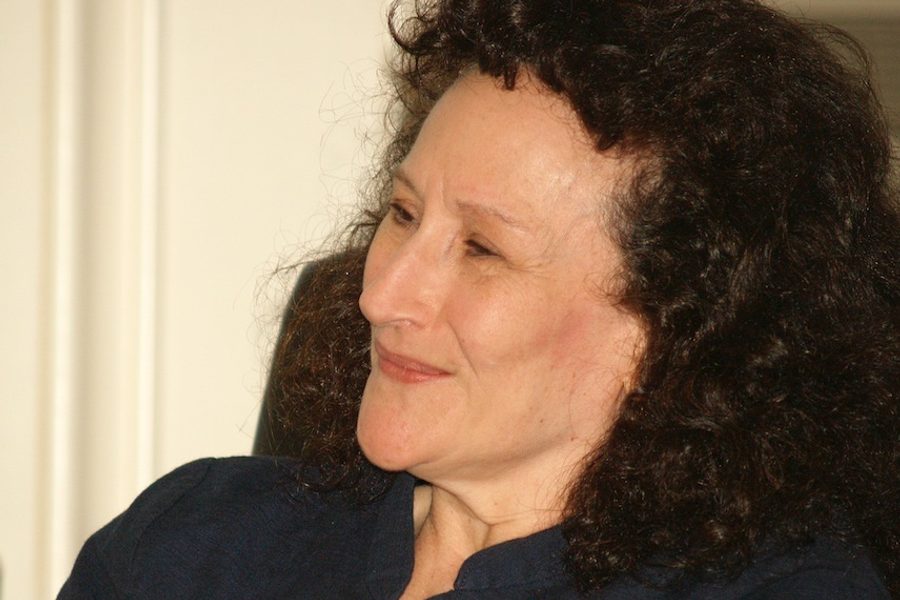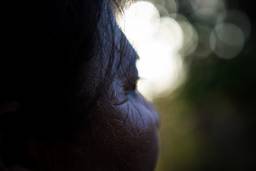What Would Lynne Tillman Do? Wouldn’t You Like To Know
Tillman’s essay collection displays her profound distrust for the way society’s stories betray our lived truths.
Jude Ellison Sady Doyle

In spring 2013, a series of posters began to appear in New York City’s Lower East Side. They were simple, pale blue squares, pasted in repeating sheets across the plywood walls that typically surround construction sites in the city. Each posed the viewer one sans-serif question: “What Would Lynne Tillman Do?”
It was an odd, surreal campaign that posited novelist, short-story writer and critic Lynne Tillman — author of American Genius, The Madame Realism Complex and The Velvet Years, an oral history of Warhol’s Factory — as a larger-than-life figure who warrants a Christ-like level of influence over her readers’ lives. If you didn’t know Tillman’s work, or were only casually familiar with it, the efforts would have seemed nonsensical.
But more than a year later, here we are with a definitive explanation: What Would Lynne Tillman Do, the essay collection. Spanning decades and genres, the pieces in the book include reviews of nearly every imaginable art form. Altogether, it clearly represents an attempt to compile a Bible of Tillman: a complete summary of her take on the world in which we live. And yet, after reading through WWLTD twice, I still don’t have a clear grasp on the apparently mythic presence that is Lynne Tillman. In fact, the more I read the book, the more convinced I’ve become that Tillman’s elusiveness — her failure to definitively cohere into the sort of larger-than-life, archetypal persona that might command its own poster campaign — is the whole point.
Reviewing WWLTD is difficult, in part because of Tillman’s formidable tendency to thwart expectations and frustrate simplistic readings of her work. Although a few of these pieces are wholly personal, such as her recollection of an inadvertently obscene phone call in Dutch and a bit about a disappointing Rolling Stones concert in the ‘60s, her anecdotes are fragmented and strangely oblique. We get little shards of life from Tillman’s reminiscences, but no clear picture of the woman who lived them.
Even Tillman’s cultural reviews or social commentaries tend to swerve from one subject to another or take odd forms. One of the more directly political pieces, an anti-Bush jeremiad, is framed as a “dictionary” of words recently invented by Tillman, forcing the reader to shift focus away from the structure in order to grasp the essay’s message. Later in the collection, a meditation on whether “authenticity” is possible in human relationships jarringly shape-shifts at the last second into a review of the Ryan Gosling vehicle Blue Valentine. Throughout the text, one gets the sense of Tillman holding her readers at arm’s length, cautioning them against assuming that they “get” her, or even thinking that there is anything to “get.” It’s the literary equivalent of a topiary maze: Readers will wander through its odd curves and cul-de-sacs, hunting for a point or a clear revelation that is always, frustratingly, just beyond reach.
But to speak of What Would Lynne Tillman Do in only this way would reduce it to pointless, precious gamesmanship: the sort of thing that might amuse someone looking for textual puzzles, but which would fail to convey any real or lasting value. And WWLTD has far more substance than such an assessment would imply. In fact, its rejection of linear form or coherence points to one of Tillman’s more enduring (and politically relevant) concerns: A profound distrust for the way that our stories — whether they be told through art, media or in person to our peers — belie our lived truths.
Over and over in these essays, Tillman returns to the ways in which narratives construct or falsify human existence. One of the more powerful essays concerns the life of Chris Sizemore — the multiple-personality-disordered woman who was fictionalized in the famous movie The Three Faces of Eve—and her efforts to put together a cured, singular “self” after that movie’s release. Sizemore’s situation is an example of the sort of meta-weirdness that fascinates Tillman: Here is a woman who spent most of her life perceiving herself as a series of fictional characters, who in turn became famous as a fictional character.
But in Tillman’s view, Sizemore (and her fictional counterpart, “Eve”) also come to stand in for the strangeness of being female in modern America. Sizemore “often compares herself with the movie’s Eve, with whom she seems at times to have a kind of sibling rivalry … She presents herself as ‘cured patient, as ‘artist,’ as ‘writer,’ as ‘normal woman, wife and mother,’ to public, family, and friends.” Sizemore is a self-constructed figure of fragmented, false and mediated “selves.” This makes her a strange case, sure — but Tillman also notes that it makes her a pretty typical woman within the patriarchy, continually trying to assemble a “real” personality from a patchwork of inherited roles and expectations.
Throughout WWLTD, Tillman pauses to note the ways that reality is continuously overhauled, re-defined and warped through its representation by artists, politicians and laypeople alike. She praises Warhol’s attempts to capture “truth” through the use of unedited material and points out how Joseph O. Brien and Andris Kurins’ 1991 true-crime account of a Mafia boss is deliberately structured to fit the precise and well-worn beats of a typical mob-bust movie. And in one of the stranger hall-of-mirrors bits, Tillman reviews a series of exhibitions about New York’s downtown art scene that feature Lynne Tillman herself. Her alarm at being reduced to a fictionalized, fabricated character — “as if living on a film set or behind glass in a diorama at the American Museum of Natural History” — resonates on a personal level, but it also speaks to her concern at the way reality is subtly transformed into story. Tillman herself confesses to reading accounts of artistic “scenes” to shape her idea of what her life ought to look like; in turn, her role as a representative of New York’s “downtown” transforms her memories for popular consumption, falsifying them in the process.
And such alterations of lived experiences aren’t limited to relatively public figures. According to Tillman, many of those who controlled the political story in the early 2000s (specifically George W. Bush and company) were “pseudoists”: people who warp facts into an all-too-convincing narrative. And, Tillman points out, if everyone trusts that kind of master narrative from the institutions that define “reality,” marginalized people will always be broadly reduced to stereotypes within it, transformed into stock characters who cannot act on their own or command a central place in the sphere of greater influence.
A woman who raises her voice, no matter the reason, is immediately condemned to irrelevance by the narrative of female hysteria; a man of color, no matter who he is, is more likely than a white man to be arrested if his car is stopped by the police. Like the historical version of “Lynne Tillman” who lives in artistic ideas of “Downtown New York,” or “Eve,” the fictionalized incarnation of Chris Sizemore who became more well-known and powerful than the actual woman, the culture’s ideas of who we are or what we’re capable of can come to dominate and twist our own actual existence.
There is no complete, Christ-like “Lynne Tillman” on offer in What Would Lynne Tillman Do: No whole and definitive explanation of who or what Tillman is, no charismatic persona to adopt as our personal savior and font of guidance. Lynne Tillman, in this essay collection, is fragmented, mediated, constructed and elusive. But this is, I would argue, a way of pushing the reader toward a more meaningful truth: By trusting stories to show us who somebody “really” is, or who we are, we’re giving away our lives — and the lives of others — in exchange for representations of life.
Jude Ellison Sady Doyle is an In These Times contributing writer. They are the author of Trainwreck: The Women We Love to Hate, Mock, and Fear… and Why (Melville House, 2016) and was the founder of the blog Tiger Beatdown. You can follow them on Twitter at @sadydoyle.








